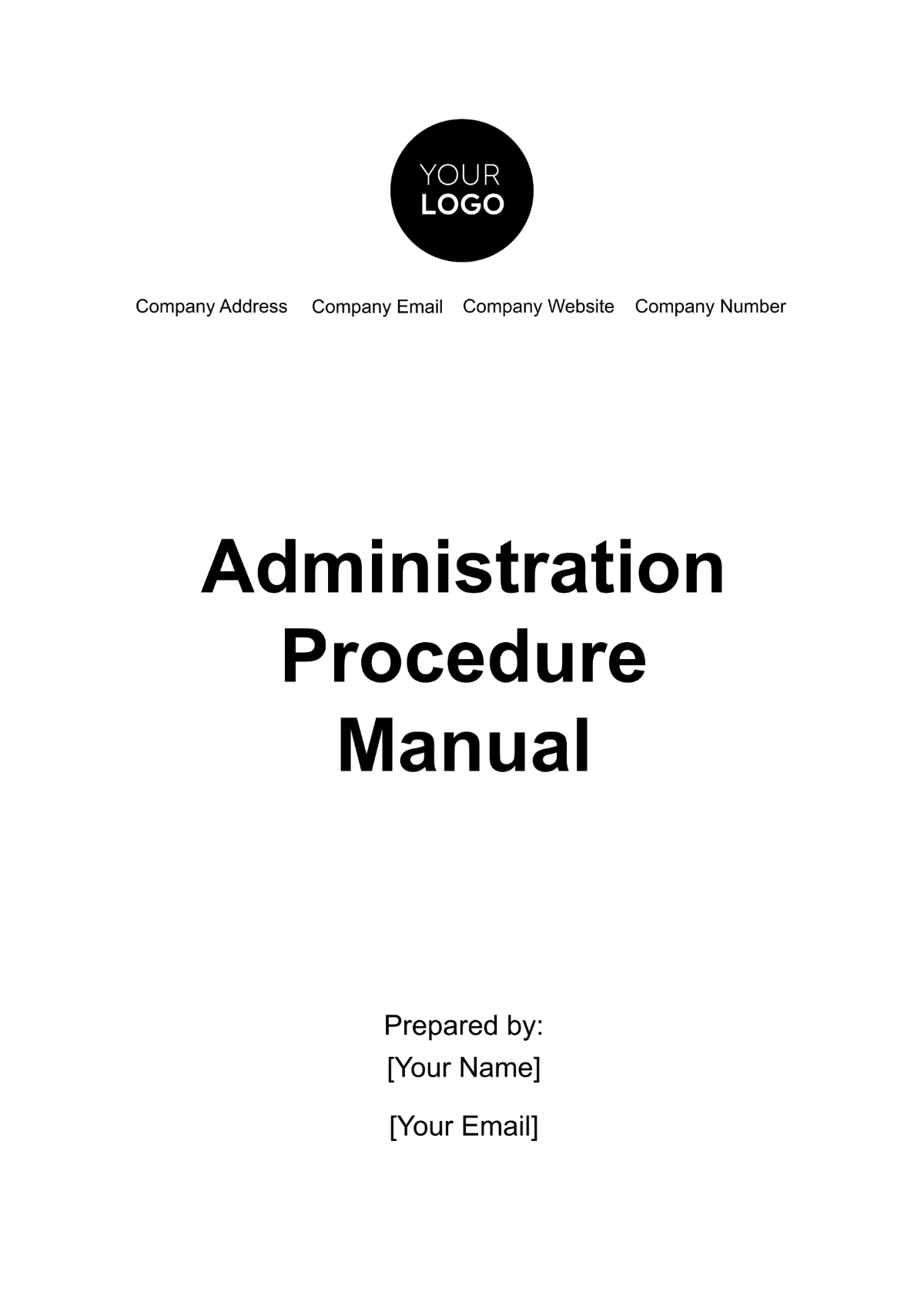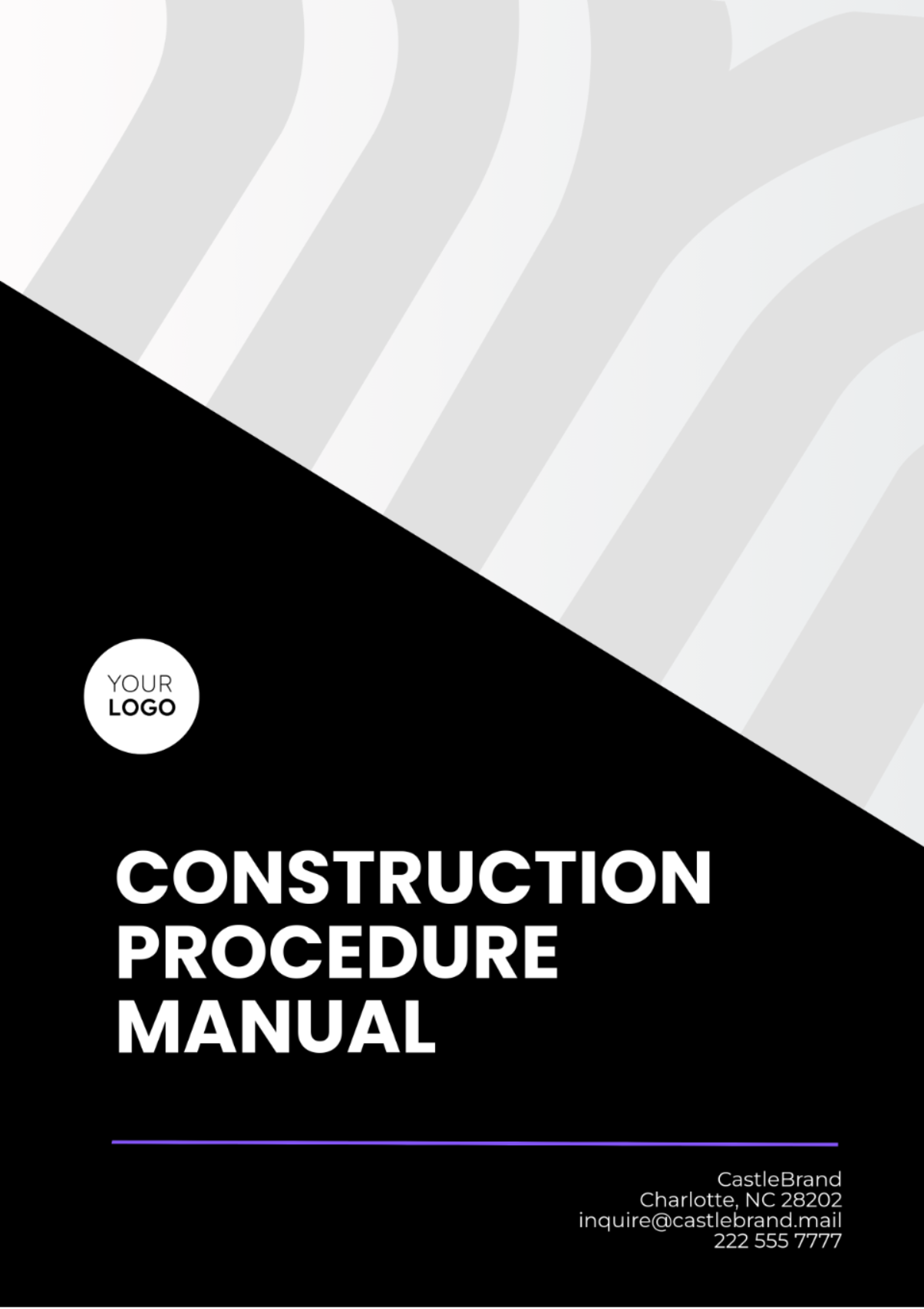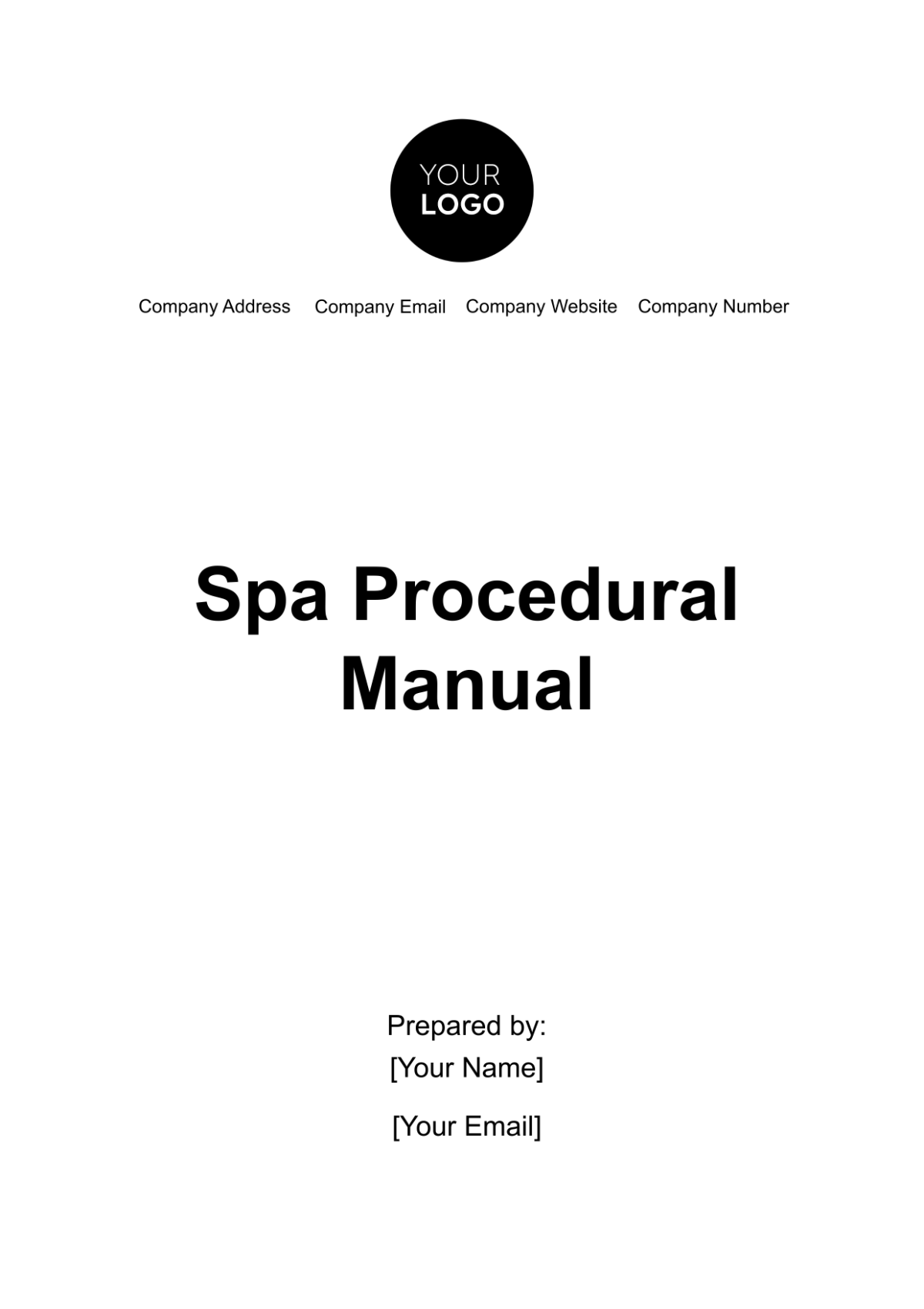TRAINING PROCEDURE MANUAL
Created By: | Company: | Department: | Date: |
|---|---|---|---|
[YOUR NAME] | [YOUR COMPANY NAME] | [YOUR DEPARTMENT] | [DATE] |
I. Introduction
At [YOUR COMPANY NAME], we prioritize the continuous development of our employees to ensure they possess the skills required to excel in their respective roles. This training manual serves as a comprehensive guide, providing clear procedures and protocols to uphold our organization's standards of excellence.
It is essential for all staff members to refer to this manual whenever they encounter uncertainty regarding training protocols or procedural processes. By doing so, we uphold consistency and precision in task performance, thereby maintaining our high work standards consistently.
II. Training Objectives
The training objectives outlined in this section are aimed at achieving specific, measurable outcomes that contribute to individual and organizational success. Examples of objectives could include:
[Objective 1]: Enhancing productivity by implementing efficient workflows and time management techniques.
[Objective 2]: Decreasing error rates through thorough understanding and adherence to standard operating procedures.
[Objective 3]: Elevating customer satisfaction scores by honing interpersonal communication skills and service excellence.
III. Training Schedule
To ensure clarity and preparedness among employees, a comprehensive training schedule is provided below:
Date | Time | Location | Topic |
|---|---|---|---|
[Date] | [Time] | [Location] | [Topic] |
[Date] | [Time] | [Location] | [Topic] |
[Date] | [Time] | [Location] | [Topic] |
IV. Training Procedure
The training procedure outlined below offers a systematic approach to executing training exercises effectively:
[Step 1]: Introduction to the training topic and objectives.
[Step 2]: Presentation of relevant information and demonstration of procedures. [Step 3]: Hands-on practice and application of learned skills under supervision.
For any inquiries or assistance, please reach out to us via [YOUR COMPANY EMAIL] or [YOUR COMPANY NUMBER].
V. Training Materials and Resources
In addition to this manual, various training materials and resources are available to support employees throughout their training journey. These resources may include instructional videos, training manuals, online courses, and reference materials.
Employees are encouraged to utilize these resources to enhance their understanding and proficiency in the training topics covered. By accessing these materials, individuals can reinforce their learning and address any areas of uncertainty or improvement.
VI. Training Assessment and Evaluation
Regular assessment and evaluation of training effectiveness are essential to ensure that learning objectives are being met and that employees are acquiring the necessary skills and knowledge. This section outlines the methods and criteria used to assess employee progress and training outcomes.
Assessment Methods: Describe the methods used to assess employee performance and understanding, such as quizzes, practical demonstrations, or evaluations by supervisors.
Evaluation Criteria: Specify the criteria used to evaluate employee performance, including accuracy, efficiency, and adherence to protocols and standards.
VII. Continuous Improvement
Continuous improvement is key to ensuring that training programs remain effective and relevant to the evolving needs of the organization. This section emphasizes the importance of feedback and suggests mechanisms for soliciting input from employees to identify areas for improvement in training processes and content.
Feedback Mechanisms: Outline channels through which employees can provide feedback on training programs, such as surveys, suggestion boxes, or one-on-one meetings with trainers.
Action Plan: Describe how feedback will be collected, analyzed, and incorporated into future training initiatives to drive continuous improvement and enhance employee learning experiences.
VIII. Role-Specific Training Modules
At [YOUR COMPANY NAME], we understand that different roles within the organization may require specialized skills and knowledge. This section introduces role-specific training modules tailored to the unique responsibilities of each position.
Training Module
Description of the training module specific to Role 1.
Learning objectives and outcomes for Role 1 employees.
Topics covered and skills developed during the training.
Training Module 2
Description of the training module specific to Role 2.
Learning objectives and outcomes for Role 2 employees.
Topics covered and skills developed during the training.
IX. On-The-Job Training Opportunities
In addition to formal training modules, on-the-job training (OJT) provides valuable hands-on learning experiences for employees. This section highlights OJT opportunities available to employees to enhance their skills and knowledge in real-world settings.
[OJT Opportunity 1]
Description of the on-the-job training opportunity.
Learning objectives and outcomes for employees participating in the OJT.
Supervisors or mentors assigned to provide guidance and support during the training.
[OJT Opportunity 2]
Description of another on-the-job training opportunity.
Learning objectives and outcomes for employees participating in the OJT.
Specific tasks or projects assigned to employees to apply their learning in practical scenarios.
X. Certification Programs
Certification programs offer employees the opportunity to validate their skills and expertise in specific areas relevant to their roles. This section outlines certification programs available to employees at [Your Company Name], along with the requirements and benefits of obtaining certifications.
[Certification Program 1]
Description of the certification program, including eligibility criteria.
Benefits of obtaining the certification for career advancement and skill enhancement.
Resources and support provided to employees preparing for certification exams.
[Certification Program 2]
Description of another certification program offered by [YOUR COMPANY NAME].
Prerequisites and requirements for enrolling in the certification program.
Support available to employees throughout the certification process, such as study materials and exam preparation resources.
XI. Recognition and Rewards
At[YOUR COMPANY NAME], we value and recognize the efforts of employees who invest in their professional development. This section highlights recognition and rewards programs available to employees who demonstrate excellence in training and skill development.
[Recognition Program 1]
Description of the recognition program and criteria for eligibility.
Types of rewards or incentives offered to employees who achieve training milestones or demonstrate exceptional skills.
Process for nominating employees for recognition and rewards.
[Recognition Program 2]
Description of another recognition program available at[YOUR COMPANY NAME].
Examples of past recipients and their contributions to training and skill development.
Opportunities for employees to nominate themselves or their peers for recognition.
Feel free to customize these placeholders according to your specific training programs and initiatives at [YOUR COMPANY NAME] If you need further assistance or have any specific requirements, let me know.
XII. Conclusion
In conclusion, this training manual serves as a valuable resource for employees of [YOUR COMPANY NAME] as they embark on their training journey. By adhering to the procedures and protocols outlined in this manual, employees can develop the skills and knowledge necessary to excel in their roles and contribute to the success of the organization.
We are committed to supporting our employees' development and ensuring that they have access to the resources and support needed to succeed. If you have any questions or require further assistance, please do not hesitate to reach out to us.
Thank you for your dedication to your training and for your contributions to the success of [YOUR COMPANY NAME].

















































